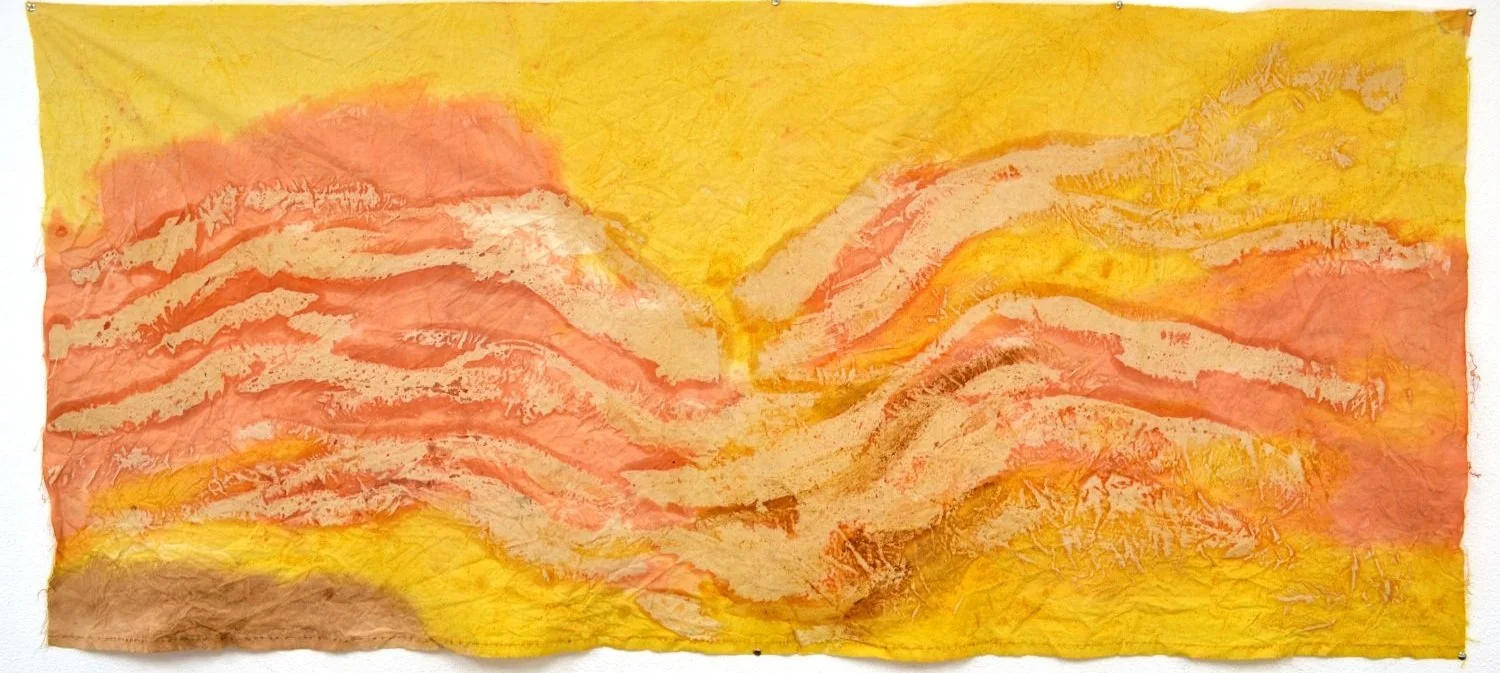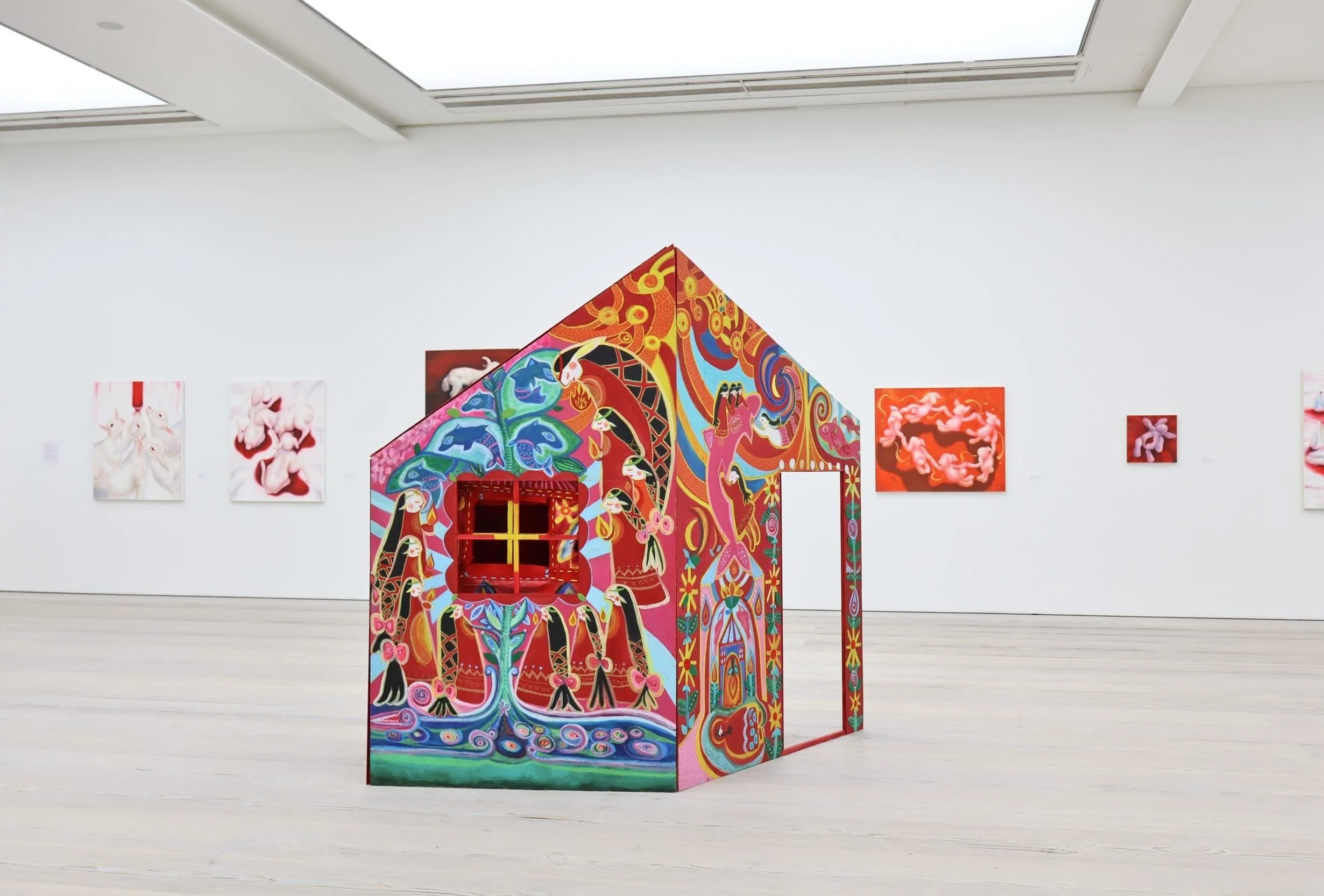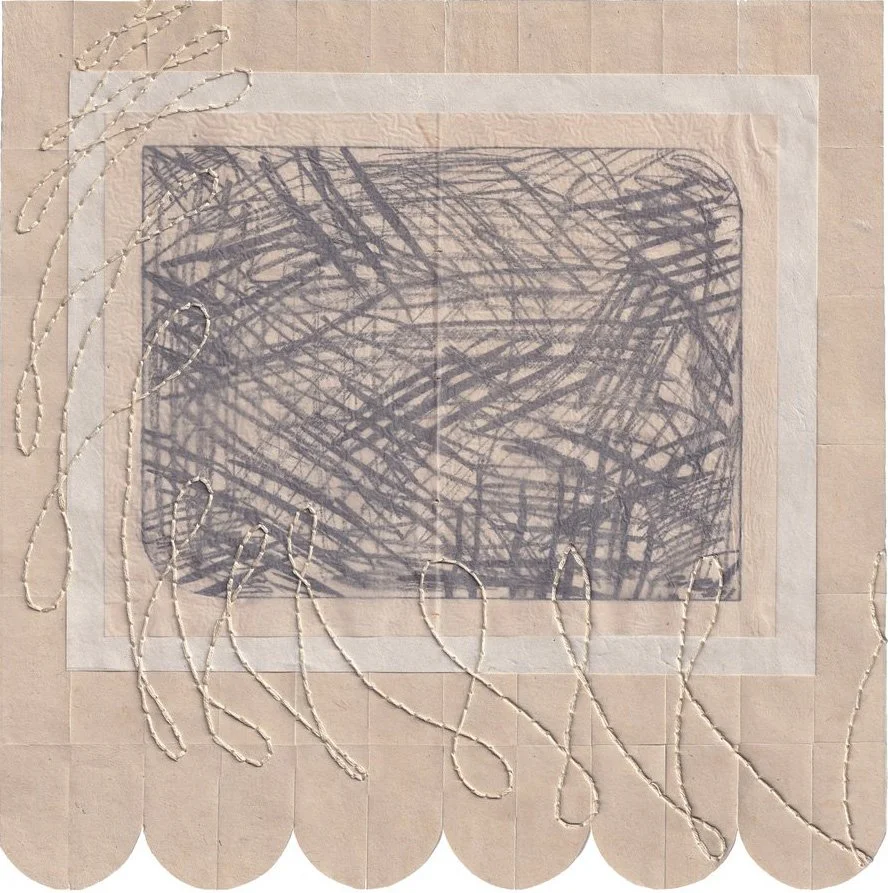10 Questions with Marija Toskovic
Born in 1980 in Belgrade, Serbia, she graduated in Visual Arts at the Academy of Fine Arts in Évora, Portugal (Painting department). She works primarily in painting, printmaking, and drawing. She has exhibited in numerous solo and group exhibitions, art shows, projects, biennials, and AIRs. She is a member of the Association of Portuguese Printmakers as well as of the Serbian Visual Artists Society. One of the founders of the Contraprova printmaking studio in Lisbon, Portugal. She lives and works in Lisbon, Portugal. Her works are part of public and private collections in Portugal, Serbia, Montenegro, Macedonia, Morocco, Venezuela, USA.
ARTIST STATEMENT
Marija Toskovic's work is based on an abstract “self-landscape” which aims to redefine the perception of an external projection of the inner identity.
It is this self-landscape, of surfaces of time and personal space, that permanently transforms and does not permanently remain. Strangely, it is exactly this (im)permanence, this coming and going, that defines the immutability of an intimate geography in her work.
She is interested in exploring the idea of (im)permanence of the “other side” on the horizon and in the landscape. The horizon contains an imaginary vanishing point where everything converges and from which everything disappears. It became an inspiration for the idea of passing from “real” to an “abstract”, inner landscape.
Part of the intrigue of this matter is the fact that no two landscapes are exactly alike, and the potential for new ways of representation multiply in her work with each new environment.
Other side#Tigradadidant 2, Mixed media on textile, 78x176 cm, 2021 © Marija Toskovic
Get your limited edition copy now
INTERVIEW
When did you start experimenting with painting, and when did you decide to become an artist?
I grew up in a family of artists where experimentation, creativity, and contact with the visual arts were a daily reality. I believe that observing the work table of my parents, both painters, and my grandfather, an illustrator, every day, made contact with the world of visual arts become as natural as part of growing up as playing or dreaming. Their hands, which from materials and supports created shapes, completely new and unseen, brought so much naturalness to the act of creating in myself. The pleasure they had in their work became part of my inner alphabet, my intimate self, and became part of the way I perceive the world and interpret it. I feel that it was a great privilege to have grown up alongside my father's incisive, strong, and tremendously lucid line, my mother's immense sensitivity to colour, and the romanticism and humanism of my grandfather's watercolours and gouaches. But it was in my adolescence, when my aunt invited me to go to the live model drawing classes she attended, that I felt that the most natural and logical thing would be to do something in my life that gives me so much pleasure. If there is a moment when you decide to consciously choose a path, even though it is an accumulation of everything that created us before then, then this was the one.
(Im)permanence 1, Mixed media on paper, 45x116 cm, 2021 © Marija Toskovic
(Im)permanence 2, Mixed media on paper, 45x155 cm, 2021 © Marija Toskovic
What was the biggest lesson you learned while trying to become an artist?
There were times when I considered it imperative to master techniques and technologies. And others when the greatest challenge was being able to represent what I visualized; and still others where I felt a great need to reach a very high level of expressiveness. To cultivate my line, to discover new techniques and materials. To be able to present my work to the world, so that it could see or feel what I felt. I believe that I managed to respond to each of these tasks I set myself, but never completely, and that's just as well - because this restlessness for the conquest of the undiscovered leads me to create again and again. Nowadays, I feel pleasure in not feeling completely satisfied at the end of each work because I know that what comes after that is a new sheet, a new white, blank canvas.
And despite everything I've said, there is no single aspect that is more important than the others and although my path is made from a mixture of all of them, what art and the path of searching for life through it have taught me as a bigger lesson is: authenticity. To be who you are and to let whatever needs to be released flow from your hands, in the name of beauty itself and for the pleasure and gratitude of being in this world.
You moved from Serbia to Portugal, two European countries but with different cultural backgrounds. What did both countries teach you? And how do they influence your art?
I moved from Serbia to Portugal in the 90s, in a very specific historical-political-cultural context. The Serbia of my youth was ex-Yugoslavia, and Portugal was a country little known to most of us, carrying a distant romanticism, a breath of fresh and almost dreamlike air somewhere by the ocean. I consider that I was lucky as few people had a background in exactly these two contexts. The vivacity, the speed, the inexhaustible vital energy, ready for all possible transformations and a great lucidity and courage, the feeling of presence in the moment, which Yugoslavia in the '80s and '90s gave me, created a base that few have. And the endless romanticism, being a dreamer, color and light in abundance, the fertile and mildness of life, and the ability to be open to the different, to relativize, to be able to embark on all aspects and to look for the new, always, which Portugal cultivated in me, are part of a certain plenitude. I think that my line, its nervousness and its incisive character, is something that I brought from one side; and that light and the discovery of color have already taken place in the other.
However, there are other sides that also "created" me later on – Montenegro, Morocco, Angola. And all of them are my home, they are an "other shore" to which I tend and that complete me, artistically and personally.
Other side#passage 3, Mixed media on canvas, 55x250 cm, 2021 © Marija Toskovic
Other side#Tigradadidant 1, Mixed media on canvas, 55x250 cm, 2021 © Marija Toskovic
What about your inspiration? What artists influence and inspire your work the most?
There have been many artists who have inspired me along the way - from Giotto, Durer and Michelangelo to Egon Schiele. I learned a lot from Édouard Vouillard and Pierre Bonnard. The "pathos" of Van Gogh and Munch. The color and light of Matisse and Gauguin, and more recently, the passion for Piet Mondrian's work. Franz Kline, Helen Frankenthaler, Hockney and Wayne Thiebaud's light. In addition to them and many others, my colleagues, my students. Nature, which, when creating, still teaches me, and I think it will always do so. And Bach, the door to the abstract.
How would you describe your creative process? Where do you start when creating a new painting?
Sometimes a small white paper and half an hour of sincerity and connection with what is done make us manage to transpose ourselves directly to the abstract, transcendental - this holy, sacred feeling towards the world, and yet so simple. Other times it takes a lot of playing with different materials, possible and impossible combinations, fun, and having pure pleasure in the material and medium at hand. To take the remains or beginnings of something that has been created and give it a twist, to breathe into it another life and another face.
Sometimes there are necessary moments of idleness, and sometimes it's those panicking hours between other tasks. With lots of music, always.
It comes in waves, high and low tides. I learned that these oscillations exist and that each one serves for the other to happen. That it is necessary to accumulate and transform, so that you can create and know how to deal with the low tides so that you can be prepared for the high ones.
Our own creative process is something we don't always understand in our youth. I think that along the way, we gain the ability to understand it, to put up with and manage the "accumulation" periods and to know what to do with the "exteriorization" periods. It's something that I'm happy to pass on nowadays to young creative people.
In your statement, you describe your work as a "self-landscape." Can you tell us more about it? And how did you evolve this way of working?
Mainly in the last two years, I have become extremely interested in the development of new ways to represent an abstract self-landscape that redefines the perception of an external projection of the inner identity, the one of the subjectivation in itself.
More specifically, I am interested in exploring the idea of (im)permanence of the "other side" on the horizon and in the landscape. The horizon contains an imaginary vanishing point where everything converges and from which everything disappears. It is the point from which one passes from reality to dream, from life to death, to the abstract, and vice versa. Like a mirage, which in the dunes reflects the image of distant landscapes upside down. This mirage, which reflects the image in reverse, is the prelude to a new return, to the search for a new "other shore".
But once the other side is reached, it stops being the "other side". As an achieved point, it becomes the starting point for a new search.
For me, this horizon line shows traces of the spirit, fragility, and tenderness of feelings and the touching flaw we carry within ourselves. Somehow, these spaces of the imaginary and fantastic, reveal dreamy territories, the landscape of our own being. Horizon cuts the arid soil slightly, finding its way in the landscape, separating gently two shores, the one of dreams and the one of wakefulness, subtly joining the differences.
It is this self-landscape, of surfaces of time and personal space, that permanently transforms and does not permanently remain. Strangely, it is exactly this (im)permanence, this coming and going, that defines the immutability of my intimate geography.
Part of the intrigue of this matter is the fact that no two landscapes are exactly alike, and the potential for new ways of representation may multiply with the new environment.
I was born on the banks of the Danube river, in Belgrade, and I live on the banks of Tagus river in Lisbon; the Atlas mountains in Morocco and the mountains around Podgorica, Montenegro, from my childhood, bring me the feeling of (im)permanence and I go back to them always with the same passion. All of them are my "other side".
Other side#(im)permanence 1, Aquatint, 50x70 cm, 2021 © Marija Toskovic
Other side#point zero, Aquatint, 70x100 cm, 2021 © Marija Toskovic
What's the essential element in your art?
What is always present, whether it is a painting, engraving, or drawing, I would say it is the movement. Sometimes, even within the most static works, I notice that it is there, even if it is in the texture, in the background. I see that each of us has our own movement, the way your being "moves" inside and expresses itself visually, it takes on a certain shape that describes this type of movement. Some of us are abrupt, elusive, slow, sudden, paused, angular, shaky.
In my case, I'd say it's something winding. Whether it is a landscape, an abstraction, a figurative form. These are the "meanders", which take various forms and take place at different rhythms in my work.
What do you think about the art community and market? And how did your perception change over the years?
I've observed that the mechanisms have changed over the years regarding the art market and the artistic community. It seems to me that the emphasis is on communication that is increasingly developed online, although the search parameters are maintained in most cases. The European art market, in turn, has been increasingly open to aesthetic and economic influences from other continents. It is also interesting that in the post-pandemic time, however, it seems to me that there has been a return to painting, drawing, and sculpture, to primary plastic art sources.
(Im)permanence 10, Mixed media on paper, 45x156 cm, 2021 © Marija Toskovic
What are your thoughts on digital presentations, like fairs and exhibitions, for artists? Do you think these are good opportunities for both young and more established artists like yourself?
In 2018, I had the opportunity to have my works exhibited on a virtual reality platform, built in Belgrade, as part of the Balkan 20/20 Project, with access to my work through virtual reality technology. The perception of the exhibition space and, consequently, of the works themselves, added an aesthetic dimension hitherto only fantasized about in previous decades, not to mention the expansion of opportunities for sharing and accessing the works. We are children of the times we live in and I think that technology brings challenges to art, in the same way that art has created needs for technology.
I think that the time and era in which we live make the communication, in general terms, take place in other ways. And the communication of any visual content nowadays is predominantly done digitally. The presentation of any artistic content inevitably has been way for some time. Resisting this need would not be wise, nor possible. However, I think that these online platforms, fairs and exhibitions represent an extraordinary challenge for those involved in terms of conception, organization, and execution of art venues and shows. In turn, opportunities expand in terms of geography and time management.
Finally, what are your plans for the future? Any exciting projects, exhibitions, or collaborations you are looking forward to?
For the moment, I am very happy for my work to be a part of "Split Practices" exhibition, within the scope of IMPACT 12, International Printmaking Conference, in Bristol, UK, 21-25th September this year. I am looking forward to attend this meeting that this year is based on the theme of" Printmakers Voice", questioning what we have learned from the pandemic through shared experiences and paradigm shifts which we cannot ever unlearn and how we have researched, communicated and applied our practice to the extended world.
Also, I am excited to exhibit my works later on in December of this year in South Korea, at the "Contemporary Landscape" exhibition at Czong Institute for Contemporary Art (CICA).
And then at the beginning of September, I will have the opportunity to exhibit my engraving works at the International Engraving Biennial in Cacak, Serbia, alongside other international engraving artists.
In 2023 I intend to organize an exhibition that could encompass the cycle of "(I'm)permanences", bringing together works created in Portugal, Morocco and Montenegro.


























